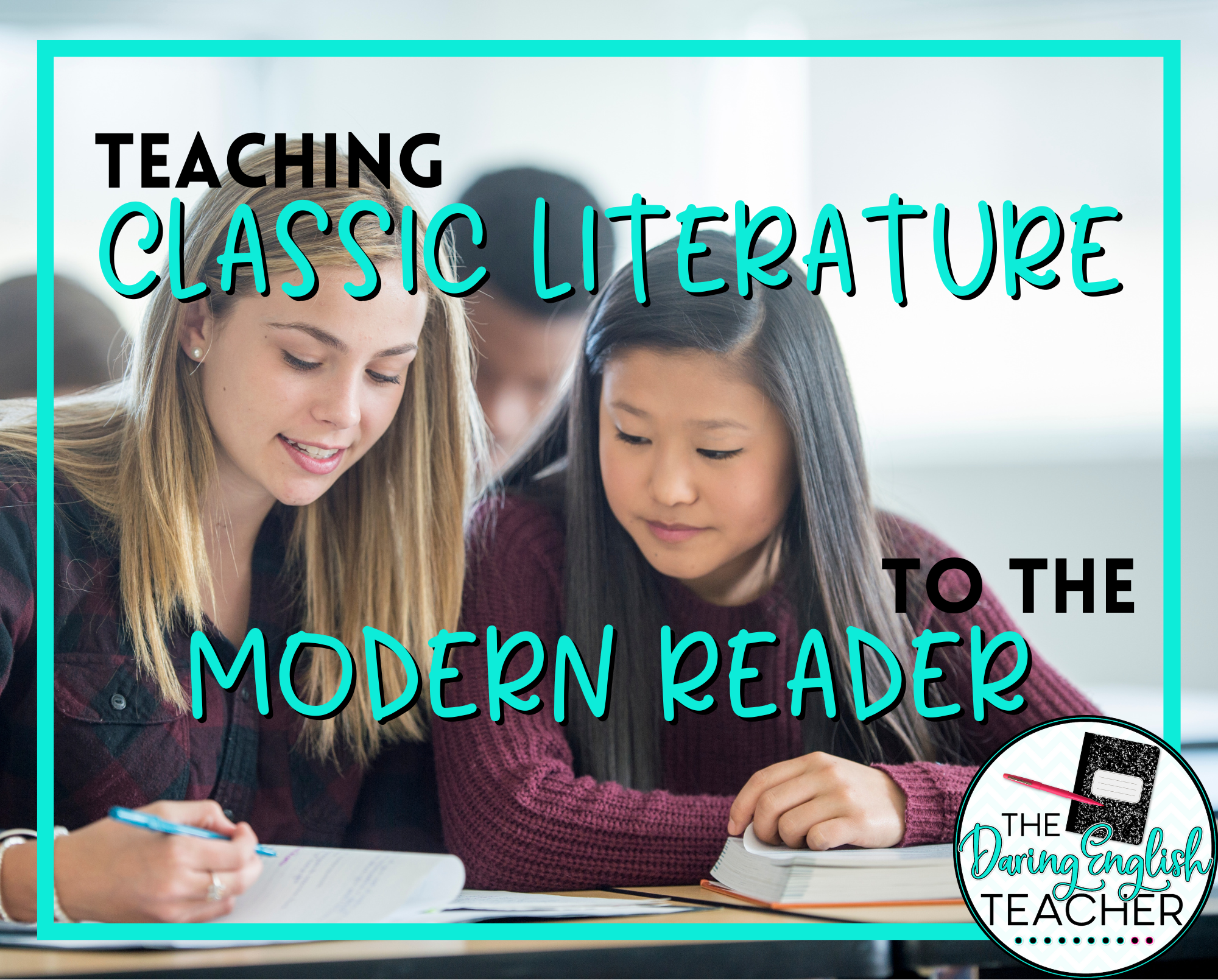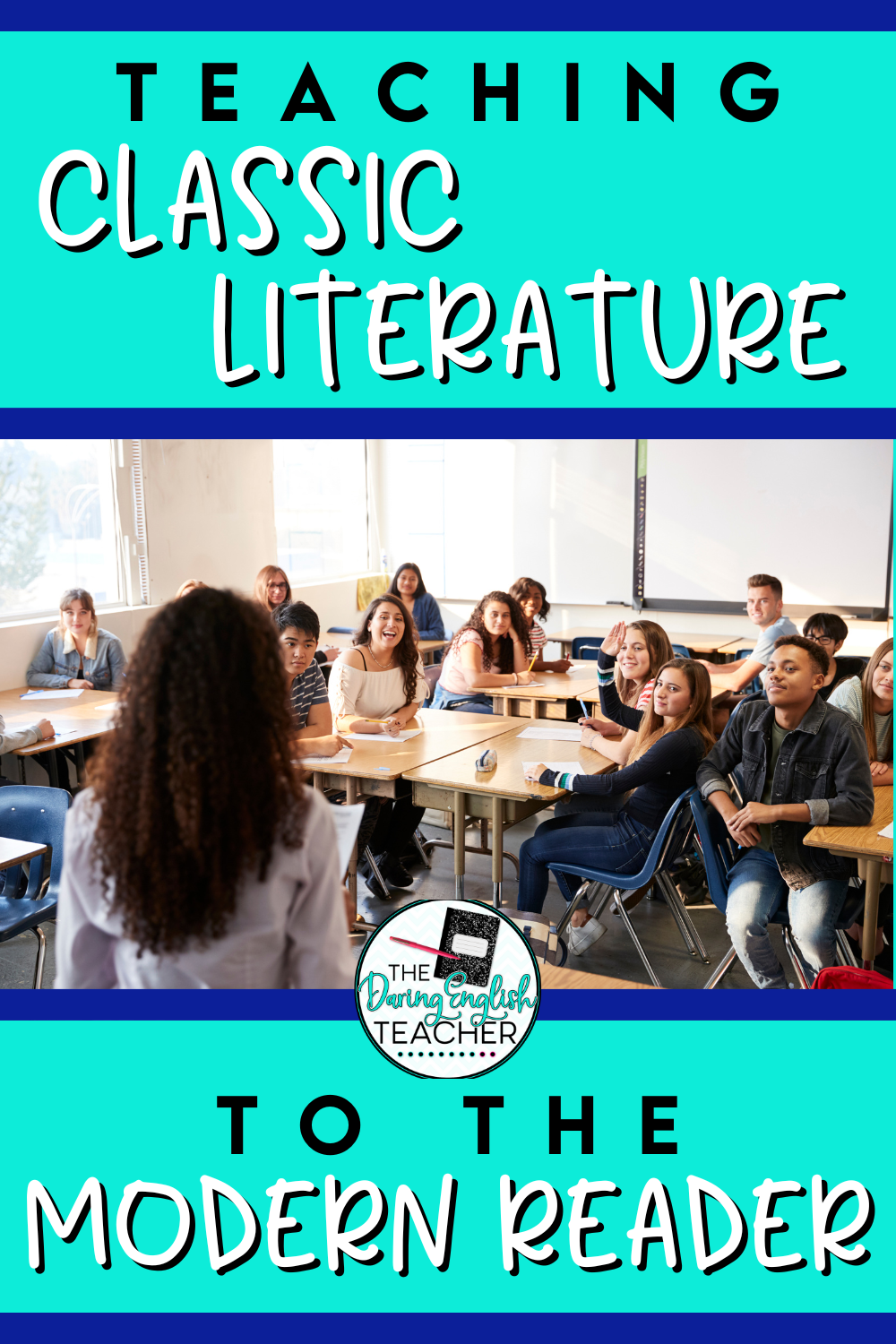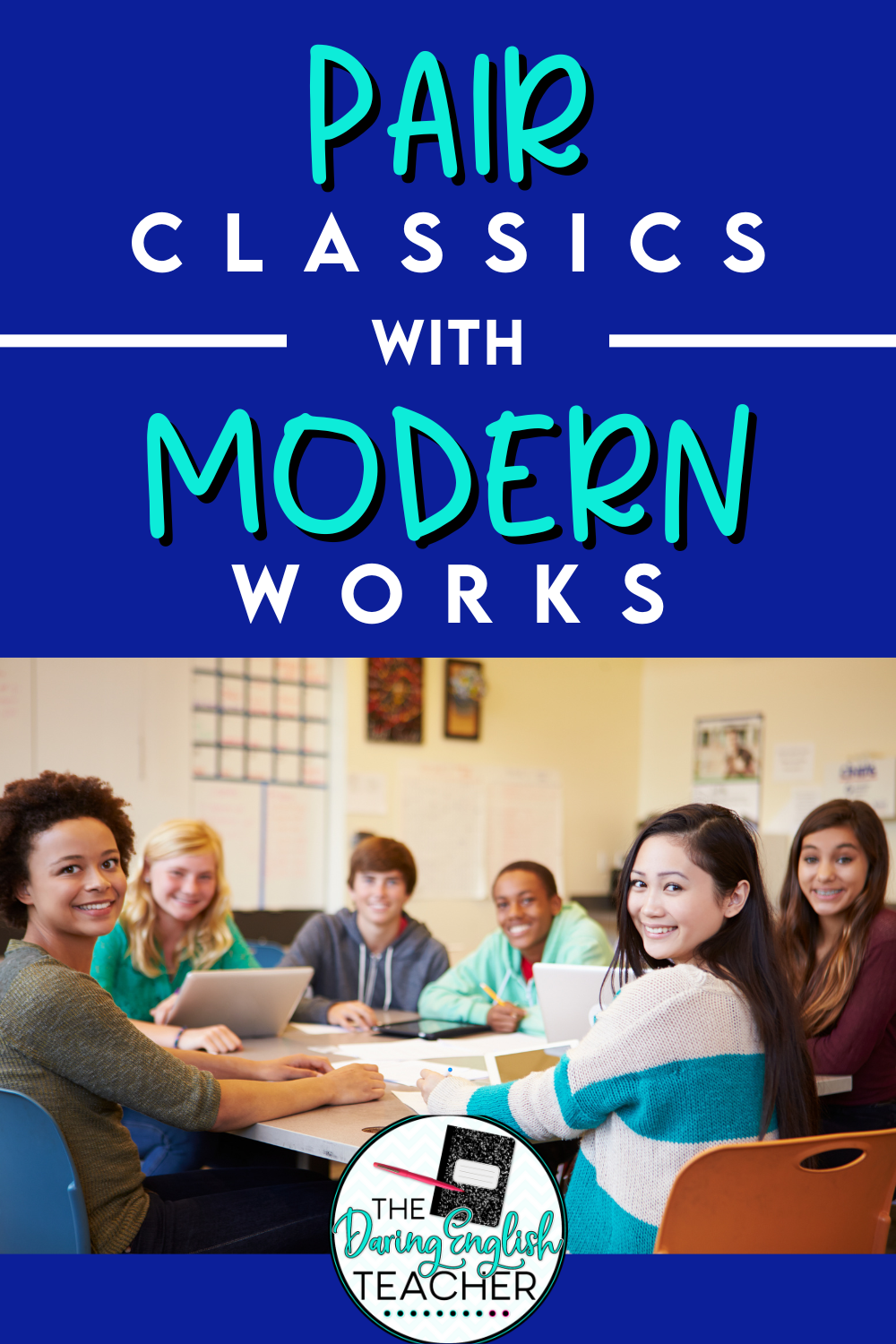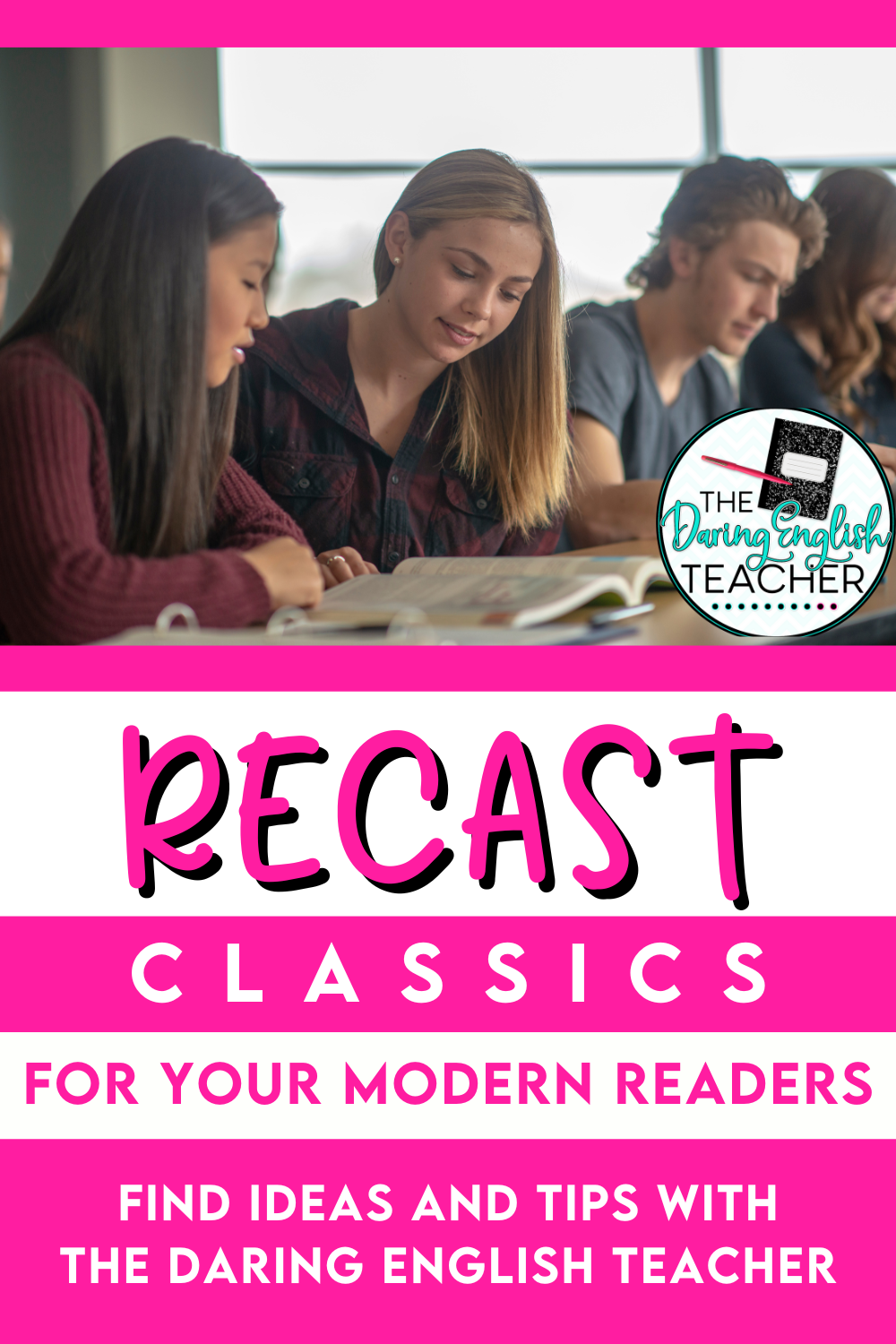Even though most secondary ELA students have a plethora of English classes to choose from, at some point or another they probably are reading “classic” literature. And while I love that students can choose to take courses such as Contemporary English or Creative Writing, I still want them to see the power and timelessness of those classic works. Check out some of these tips for teaching these classics to modern readers.
1. Make it fast and friendly
We live in a high-speed world. Sometimes I am more concerned with students getting the “gist” of a work rather than reading the entirety of a novel. No matter what I do, some students are just not going to find Victorian-era literature tantalizing. Instead, we might read passages and discuss connotations, or try to mimic writing style, or I’ll have them search for examples that make the novel fit into its genre. Think about what you want students to get out of the experience of reading the novel, play, or collection, and decide if it would be better suited as a “highlight” study.
2. Pair with what they know
There are many classic pieces of literature that pair well with modern works. Especially if you read some of those “timeless” classics like Romeo and Juliet or Frankenstein. We have many options we can pair together. Look for modern tales with similar themes. You don’t have to strictly find adaptations of the same work (though there are plenty of options available). You can have interesting conversations with students about what makes themes timeless, how a theme or moral may change across generations, or what makes a work outdated.
3. Assess through conversation
Speaking of conversations, consider nixing assessments via quizzes and tests. While writing skills is certainly important, so is the ability to have a conversation. Take classic literature study as an opportunity to introduce Socratic Seminars so that you can focus on conversation-based assessments. You may also try Literature Circles (try these Task Cards for quick assessment options) so students can either work in small groups to complete the work or select their own preference when reading literature.
4. Use what they know
Students today are socially saturated with visual components. Just take a look at social media platforms. Pictures and videos prevail. Lean into the culture (within reason). Shakespearean works, for example, are full of scandal, sordid mockery of the times, and universal themes. Students can create “social media” accounts for characters, following the story and summarizing its parts through “posts”. You may also try having students write TMZ-style tell-alls with newspaper articles and gossip columns.
5. Let them recast the classics
Maybe students just aren’t connecting how you would hope. Instead, try letting them revamp the classics to something that would catch their attention. What modern telling of Animal Farm would they connect with more? If Oliver Twist doesn’t seem relevant, what if they retold it from the perspective of a child in foster care? Moby Dick can be a retelling of a ruthless CEO stopping at nothing to improve his business. Let creativity shine and let students tell you what makes a literary work valuable to them.
If you’re searching to connect students to the classics, let me know if any of these ideas worked in your classroom. Or, comment below with lessons and activities you found successful in bridging the gap between classic literature and modern readers.





